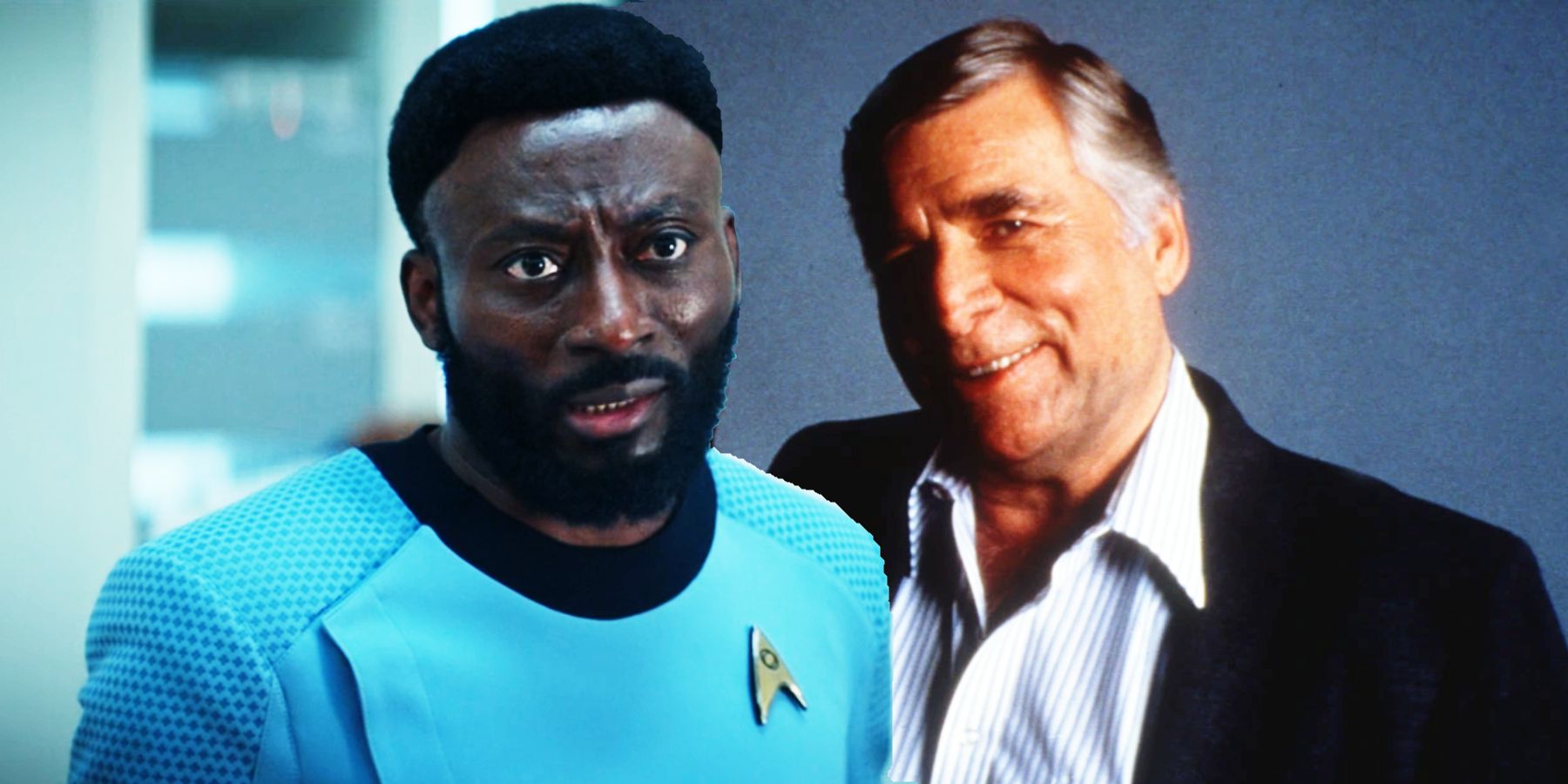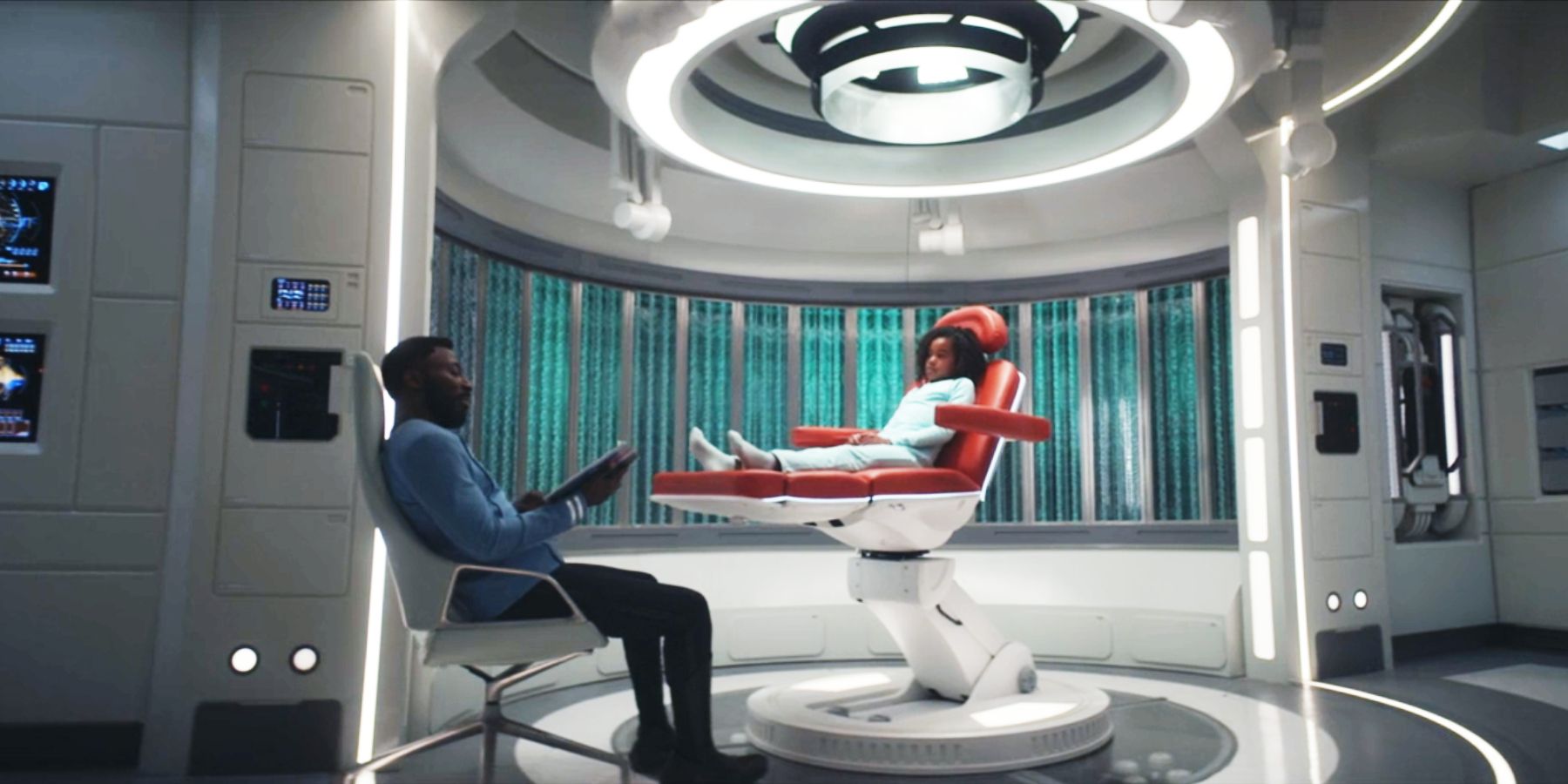Warning: SPOILERS for Star Trek: Strange New Worlds episode 3, "Ghosts of Illyria."
Star Trek: Strange New Worlds has finally fulfilled Gene Roddenberry's vision for one Star Trek: The Original Series character. In Strange New Worlds season 1, episode 3, "Ghosts of Illyria," the crew of the Enterprise falls victim to a mysterious virus that can spread through light waves. Attempting to save her crew while Captain Pike (Anson Mount) and Mr. Spock (Ethan Peck) are stranded on the planet below, Number 1 (Rebecca Romijn) requires the assistance of Dr. M'Benga (Babs Olusanmokun) and Nurse Chapel (Jess Bush) to find a cure.
"Ghosts of Illyria" is the first episode to shift focus from Captain Pike's fate to some of the other Enterprise crewmembers. While this is an episode that focuses predominantly on Number 1's backstory, it also provides more insight into M'Benga. Created by writer Darlene Hartman in an unproduced Star Trek: The Original Series script entitled "Shol," M'Benga (Booker Bradshaw) went on to appear in season 2, episode 16, "A Private Little War," and season 3, episode 14, "That Which Survives," in which he stood in as the ranking medical officer during Leonard McCoy's (DeForest Kelly) absence. In Strange New Worlds, M'Benga is the Enterprise's doctor, and a fully-fledged character rather than a mere replacement.
"Ghosts of Illyria" fleshes out M'Benga beyond Star Trek's stand-in Enterprise doctor, providing him with a tragic backstory involving his terminally ill daughter. It's revealed that M'Benga's refusal to upgrade the medical transporter's pattern buffers in which she's preserved has caused the outbreak and compromised his own Hippocratic oath to do no harm. Placing M'Benga's character arc at the center of Strange New Worlds season 1, episode 3 fulfills an abandoned plan by Gene Roddenberry and Darlene Hartman to put M'Benga at the center of his very own Star Trek series entitled Hopeship. It would have focused on the work of a Starfleet medical ship, but the project was unfortunately abandoned before entering development. In having Dr. M'Benga as a full-time member of the crew, Strange New Worlds finally gets to explore the character in the sort of detail that Hopeship would have allowed for.
All that was known about M'Benga from his two prior on-screen appearances in Star Trek canon was that he was an expert in Vulcan physiology following an internship on their home planet. After just three episodes of Strange New Worlds, viewers know that M'Benga has a daughter and has traveled through both his native Kenya with Pike and Pike's native Mojave. M'Benga's motivations for seeking out new life and new civilizations are also revealed in "Ghosts of Illyria." The Enterprise's doctor is hoping that somewhere out in the universe is the means to cure his beloved daughter of her terminal illness. It's a compelling character arc that could lead to a complex moral dilemma later in the series. If it had made it to TV, Hopeship would have explored the complexities of medicine in Gene Roddenberry's utopian future, and if M'Benga finds a cure, employing it to save his daughter could go against Star Trek's Prime Directive.
Dr. M'Benga is just one of several Star Trek characters to have been given a second chance with their inclusion in Strange New Worlds. Christopher Pike and Number 1 were very nearly erased from Star Trek history until "The Menagerie" repurposed footage from Star Trek's unaired pilot. In fleshing out these familiar but relatively blank slate characters, Star Trek: Strange New Worlds can pay homage to Gene Roddenberry's original vision and tell compelling new stories by showcasing the full potential of his lesser-known creations. Through the return of M'Benga, Star Trek can finally fulfill the promise of the abandoned Hopeship show.
Star Trek: Strange New Worlds streams Thursdays on Paramount+.


